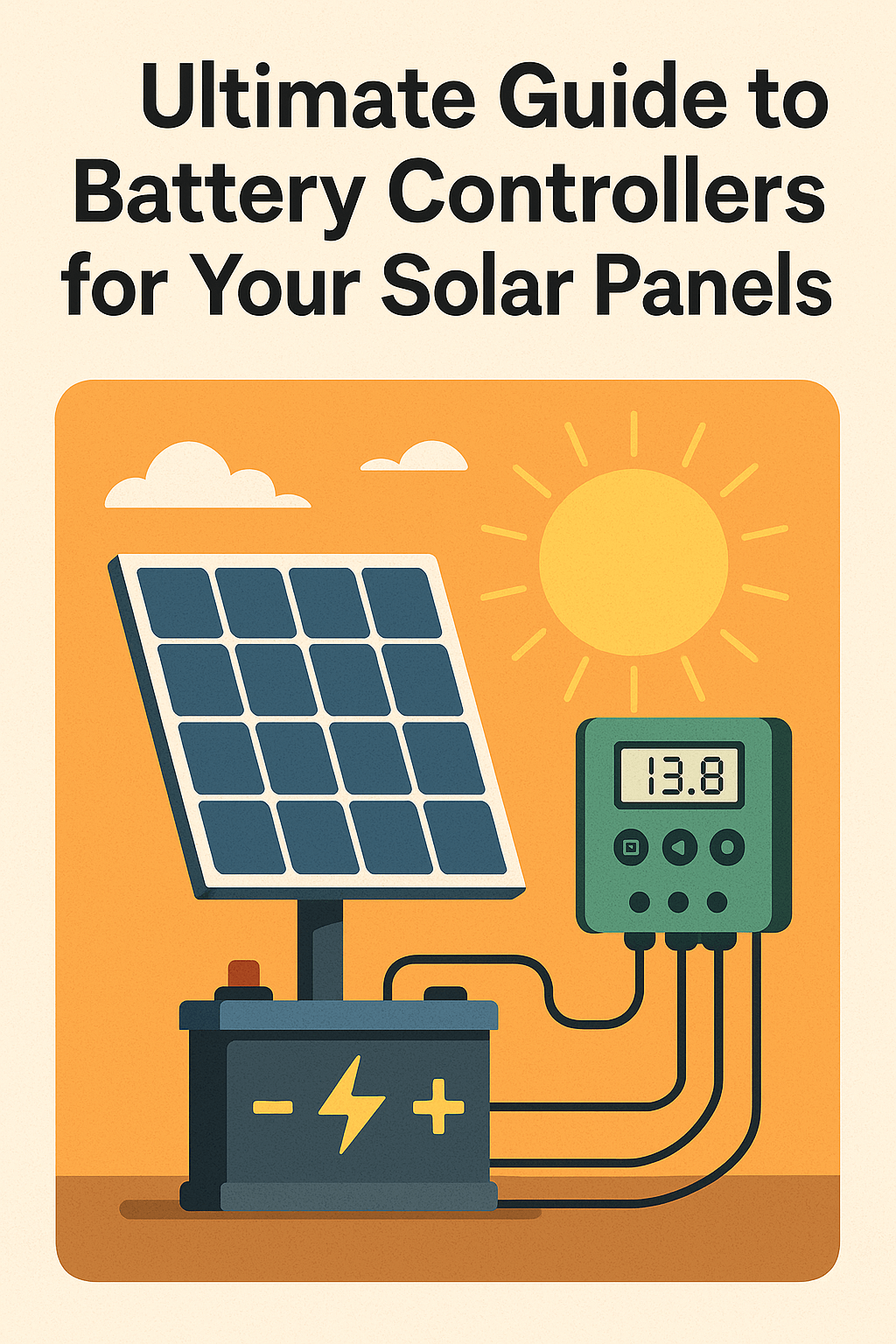Solar energy systems are a marvel of modern technology, but even the most advanced setup can falter without a critical component: the battery controller solar panel enthusiasts rely on. Often overlooked, this device is the unsung hero that ensures your system runs smoothly and safely. Curious how it works or why you can’t skip it? Let’s dive in.
By the end of this guide, you’ll understand how a battery controller protects your investment, how to select the ideal one, and why it’s the backbone of any efficient solar array. Ready to become a solar savant? Let’s illuminate the details!
What’s a Battery Controller (and Why Can’t Your Solar System Thrive Without One?)
Imagine your solar panels as a powerful river of energy. Without a dam to regulate the flow, that river could flood your batteries—literally. A battery controller solar panel system (commonly called a charge controller) acts as that dam, managing the voltage and current streaming from your panels to your battery bank.
Here’s the problem: solar panels don’t produce a steady stream of electricity. They generate surges of power that can overwhelm batteries, leading to overheating, reduced lifespan, or even catastrophic failure. A battery controller steps in to:
- Block Overcharging: Halts excessive voltage before it fries your batteries.
- Prevent Deep Discharge: Stops batteries from draining to zero, which can render them useless.
- Optimize Energy Transfer: Acts as a smart gatekeeper, directing energy flow for peak efficiency.
In short, skipping a battery controller is like driving a car without brakes—risky and unsustainable.
PWM vs. MPPT: Which Battery Controller Solar Panel Setup Is Right for You?
Not all controllers are created equal. The two primary types—PWM and MPPT—serve different needs. Let’s break them down:
1. PWM (Pulse Width Modulation) Controllers
Think of PWM as the reliable workhorse. It regulates charging by intermittently reducing the current flow, ensuring batteries charge safely. However, simplicity has trade-offs.
- Ideal For: Small-scale systems (e.g., RVs, garden lights) or budget-conscious setups.
- Strengths: Affordable, durable, and user-friendly.
- Limitations: Less efficient with high-voltage panels or fluctuating sunlight.
2. MPPT (Maximum Power Point Tracking) Controllers
MPPT controllers are the efficiency champions. They constantly adjust to harvest the maximum power from your panels, even converting excess voltage into usable current.
- Ideal For: Larger systems, cloudy climates, or setups with complex configurations.
- Strengths: 20–30% more efficient than PWM, excels in variable conditions.
- Limitations: Higher upfront cost, but long-term savings justify the investment.
The Verdict: If you’re powering a cabin or DIY project, PWM suffices. But for whole-home systems or areas with inconsistent sunlight, MPPT’s performance is unbeatable.
5 Steps to Picking the Perfect Battery Controller
Selecting the right controller isn’t rocket science, but it requires attention to detail. Follow these steps:
- Decode Your Panel’s Specs
Locate your panel’s peak power voltage (Vmp) and short-circuit current (Isc). Your controller must handle these numbers comfortably. Pro Tip: Opt for a controller rated 25% above your panel’s max output for future-proofing. - Align with Battery Voltage
Match the controller to your battery bank’s voltage (12V, 24V, etc.). Many controllers auto-detect voltage, but double-check compatibility. - Plan for Growth
Dreaming of adding panels later? Choose a controller with surplus capacity to avoid costly upgrades. - Prioritize Smart Features
Modern controllers offer Bluetooth monitoring, temperature sensors, and load control. These extras simplify maintenance and boost usability. - Consider Environmental Factors
Will the controller face extreme heat or moisture? Opt for rugged, weather-resistant models.
Pro Tips to Maximize Your Battery Controller’s Lifespan
- Embrace Smart Monitoring
Use apps or built-in displays to track performance trends. Spotting irregularities early can prevent system meltdowns. - Keep It Cool and Clean
Dust and heat are enemies of electronics. Install your controller in a shaded, ventilated area and clean it with a dry cloth monthly. - Respect the Limits
Pushing your controller beyond its specs is a recipe for disaster. Label max voltage/current on the unit as a reminder. - Update Firmware
Some advanced controllers receive software updates. Stay current to unlock new features and efficiency boosts.
Why a Battery Controller Solar Panel System Is a Non-Negotiable Investment
Think of a battery controller as insurance for your solar setup. It safeguards against costly battery replacements, optimizes energy harvest, and ensures your system runs smoothly for decades. Whether you’re a weekend DIYer or a renewable energy devotee, this device is the cornerstone of a reliable solar array.
Ready to Supercharge Your Solar Setup?
Armed with this knowledge, you’re poised to choose a battery controller solar panel system that fits your needs. Have questions about pairing controllers with lithium batteries or designing an off-grid powerhouse? Share your thoughts below or connect with our solar experts for tailored advice.
Here’s to brighter, smarter energy solutions!
FAQ’s
1. Why do I need a battery controller for solar panels?
It prevents overcharging/over-discharging, extends battery lifespan, and ensures safe, efficient energy transfer.
2. PWM vs. MPPT: Which is better?
PWM suits small, budget systems; MPPT maximizes efficiency for larger setups or areas with inconsistent sunlight.
3. How do I size a battery controller?
Match its voltage to your battery bank; ensure current rating exceeds your solar panel’s max output by 25%.
4. Can a controller work with lithium batteries?
Yes, but verify compatibility—some controllers require specific settings for lithium’s unique charging/discharging requirements.
5. Does an MPPT controller save money long-term?
Yes! Higher efficiency (20-30% gains) offsets its upfront cost, especially in cold or cloudy climates.
